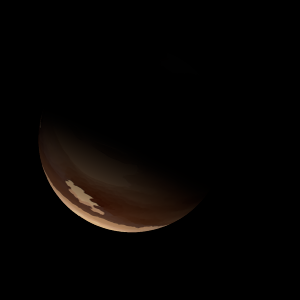|
|
Space Astro
|
Info for exoplanet "Nusbeb"
| Scientific (actual) data |
|---|
| Name | Kepler-1187 b |
| Planet status | Confirmed |
| Radius | 0.233 |
| Orbital period | 18.8706 |
| Discovered | 2016 |
| Updated | 2021-02-05 |
| Tconj | 2454980 |
| Publication | Announced on a website |
| Detection type | Primary Transit |
| Alternate names | 2MASS J19073408+3819067 b, K02314.01, KIC 3219995 b, KOI-2314 b, KOI-2314.01, WISE J190734.06+381906.5 b |
| Star name | Kepler-1187 |
| Right ascension | 286.89° |
| Declination | 38.32° |
| Mag j | 13.507 |
| Mag h | 13.155 |
| Mag k | 13.151 |
| Star distance | 1029 |
| Star metallicity | -0.01 |
| Star mass | 1.06 |
| Star radius | 1.09 |
| Star age | 3.39 |
| Star temperature | 5975 |
| Star alternate names | 2MASS J19073408+3819067, KIC 3219995, KOI-2314, WISE J190734.06+381906.5 |
| Wikipedia article | Kepler-1187 b |
Back
| |
| Fictional info (?) |
|---|
| Suggested name | Nusbeb |
| Planet type | Cold planet |
| The planet telescopically displays the complete range of phases, similar to Venus and the Moon, as it moves in its inner orbit relative to Kepler-1187, which reoccurs over the so-called synodic period approximately every 139 days.
The formaldehyde has probably photodissociated, and the free ammonia has been swept into interplanetary space by the solar wind because of the lack of a planetary magnetic field. |
| Atmosphere | Ammonia | 56% |
| Ozone | 43% |
| Formaldehyde | 0.36% |
| Xenon | 0% |
| Atmospheric pressure | 4 bar |
 |
| No known satellites |
| Google search for Nusbeb |
|
Website by Joachim Michaelis
|
|
|
|